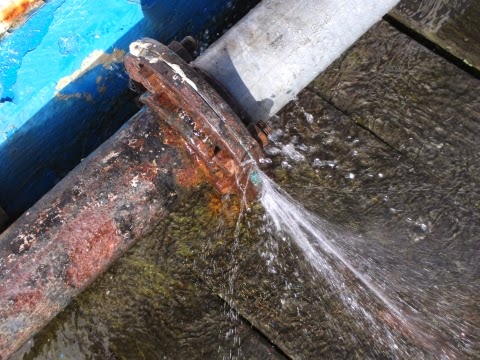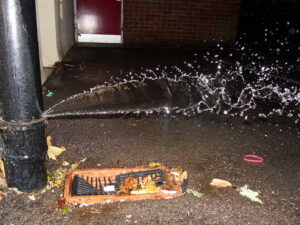Detecting a Busted Pipe and Quickly Applying Effective Solutions
Detecting a Busted Pipe and Quickly Applying Effective Solutions
Blog Article
What're your ideas on How to install a dishwasher safely?

A burst pipeline is a major emergency; you can only stand as you view water you pay a lot to reunite with the earth. In even worse situations, you notice a swimming pool on your kitchen floor, which is an excellent journey hazard, specifically if you have children around. If the pipeline that burst remained in your walls, trouble: you might need to paint that whole section.
How can a tragedy like a burst pipeline be protected against and also handled? Well, by listening to your professional emergency plumbing technicians and complying with these regulations.
How do I recognize when my pipelines have burst?
Rising and fall water pressures
Pipes do not just burst in a day. You might have noticed that your kitchen area faucet or shower doesn't run promptly when you turn the faucet. It might stop briefly for a couple of seconds and after that blast you with even more pressure than usual.
In other circumstances, the water might appear regular at first, then decrease in stress after a couple of seconds.
Wet wall surfaces and also water stains
Before a pipeline bursts, it will leakage, the majority of times. If this persistent leaking goes unnoticed, the leakage may finish into a broad tear in your pipeline. One very easy way to avoid this emergency is to look out for wet wall surfaces ad water stains. These water spots will lead you right to the leakage.
Puddles under pipelines and sinks
When a pipe bursts, the outflow develops a pool. It may show up that the puddle is expanding in dimension, as well as no matter the amount of times you wipe the puddle, in a few minutes, there's one more one waiting to be cleaned up. Commonly, you might not be able to map the pool to any visible pipelines. This is an indicator to call an expert plumber.
Untraceable dripping sounds
Pipe ruptureds can happen in one of the most undesirable places, like within concrete, inside wall surfaces, or under sinks. When your house goes silent, you may have the ability to hear an irritatingly consistent leaking sound. Also after you have actually checked your shower head and also kitchen faucet, the dripping may continue.
Dear viewers, the leaking might be coming from a pipeline inside your wall surfaces. There isn't much you can do concerning that, except tell a professional plumber.
Shut off the Water
When water freezes, it broadens in volume by about 9 percent. As well as it broadens with incredible force: The stress inside pipelines may go from 40 pounds per square inch to 40,000 psi! No pipe can hold that much stress, so it bursts. The break may happen where the ice types, yet more often, it happens where water pressure locates a vulnerable point in the pipe. That may be inches and even feet from the frozen area. Find the water shutoff valve and also switch off the water to stop even more damage. You might also require to shut off the power also, depending on where the leakages happens and just how big it is.
Contaminated water
Many people presume a ruptured pipeline is a one-way electrical outlet. Rather the contrary. As water drains of the hole or gash in your plumbing system, pollutants discover their method.
Your water might be polluted from the source, so if you can, inspect if your water container has any issues. Nevertheless, if your drinking water is supplied as well as purified by the local government, you should call your plumber quickly if you see or scent anything funny in your water.
What do I do when I identify a burst pipeline?
Your water meter will remain to run also while your water wastes. To minimize your losses, locate the major controls and transform the supply off. The water mains are an above-ground framework beside your building.
How to Fix & Detect a Leaking Pipe
How Do I Know if a Pipe is Leaking?
Leak detection tests can help you determine if your pipe has a leak. Even if you don’t see an apparent leak, you should still conduct leak detection tests regularly to save water and money—and prevent major damage to your home.
Water meter. It can be helpful to figure out what your usual water meter usage numbers are and then monitor them regularly. To monitor your meter, first, turn off all water faucets in your home. Check the meter and write down the numbers. In a few hours, check the meter again. If the numbers have changed, you have a leak. Water gauge. Use a water gauge to test your water pressure. Your showerhead should produce a certain amount of water pressure based on its model and design. If the pressure is lower than it is supposed to be for that specific showerhead, your home likely has a leak. Puddles. Look inside your bathroom, laundry, and kitchen sink cabinets. Puddles around the cabinets or around toilets, tubs, showers, and washing machines indicate the presence of a leaking pipe. You may also notice loose tiles, peeling or flaking paint, or mold caused by water accumulation. Napkin test. Even if you don’t see any puddles, you may still have a leak. You can test for water leaks in the bathroom, laundry, and kitchen by wiping below-sink connections with a napkin, paper towel, or piece of toilet paper. If it becomes damp, you probably have a leaking pipe under the sink. Discolored walls. Walls that are discolored—usually with brown or yellow stains—or bulging might mean that they have been impacted by water damage caused by a leaking pipe. Smell. A leaky pipe will create sitting water, and over time, that water may develop a musty smell. If your home smells musty, but you can’t locate the source, it may be due to a leak. Steps for Fixing a Leaking Pipe
A leaky drain can be remedied by tightening the pipe base, replacing the drain seal, caulking the rim, and tightening the pipe nut. Similarly, a leaking toilet pipe can be treated by tightening the packing nut. You may also need to replace the valve. A leaky faucet may just need tightening or replacement of the washers. If that doesn’t work, consider replacing your faucet. If your pipe has a hole in it, you may want to use a pipe leak sealer or pipe leak tape. This quick fix for water pipe leaks can also temporarily fix a copper pipe leak. https://www.ahs.com/home-matters/quick-tips/how-to-tell-if-pipes-are-leaking/

Do you like reading up on How to Install and Connect a New Dishwasher? Try leaving a remark further down. We would be glad to know your insights about this piece. In hopes to see you back again in the future. Appreciated our review? Please share it. Help somebody else locate it. Thanks a lot for your time. Come back soon.
Request Estimate Report this page